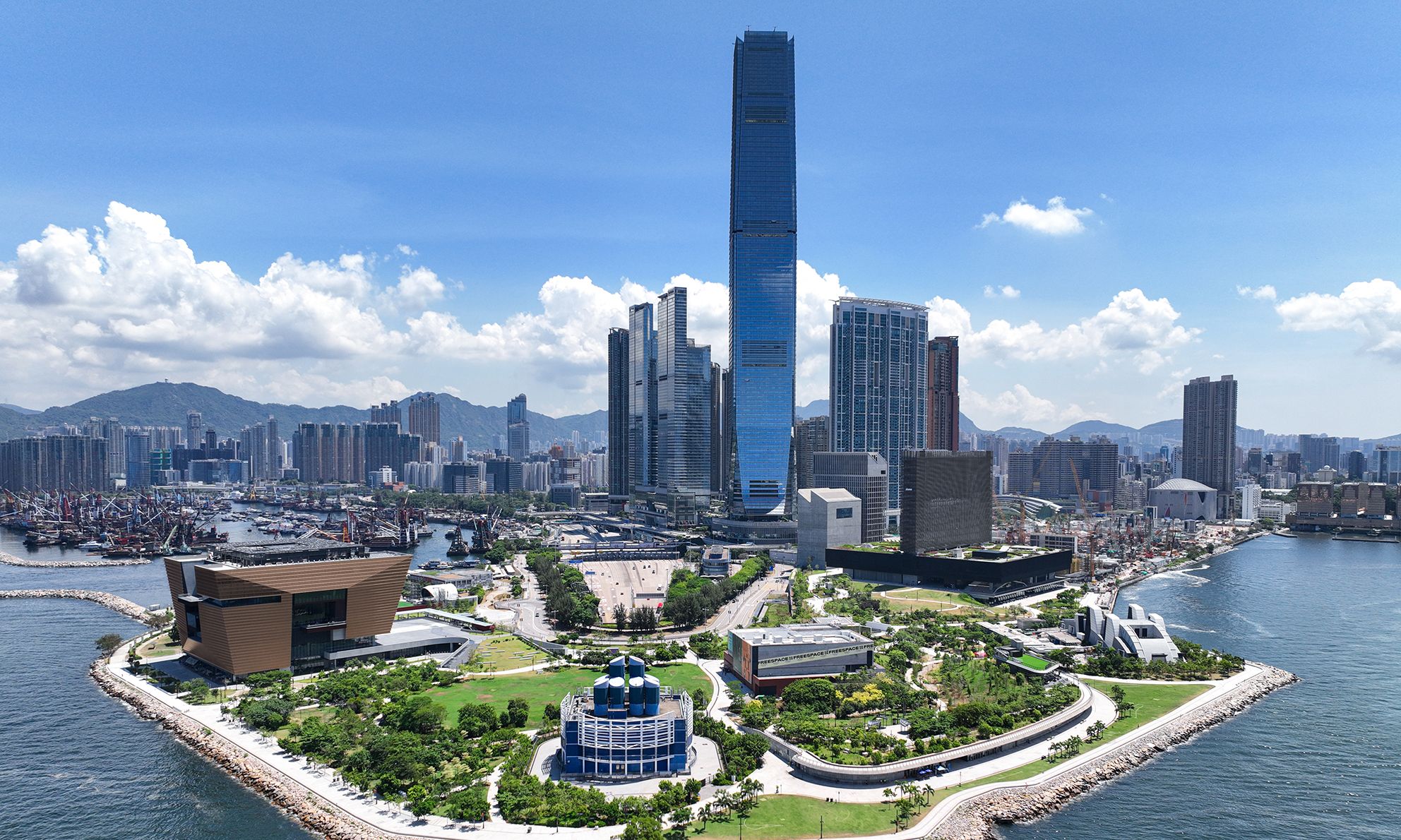West Kowloon Cultural District (WKCD)—the burgeoning arts district on the southern tip of Hong Kong’s Kowloon peninsula on the Victoria Harbour waterfront—is making its mark on the world cultural stage. This week, WKCD is hosting a major summit bringing together more than 20 directors and curators from 12 countries along with 1,000 delegates (Connecting Cultures/Bridging Times, 24-25 March).
At the summit, the West Kowloon Cultural District Authority, the body behind the Hong Kong arts hub, signed numerous memoranda of understanding with more than 20 culture institutions worldwide in a bid to foster relationships with other institutions and culture hubs. The memoranda cover collection sharing, partnerships on conservation, and scientific research as well as education and exchange programmes.
The M+ museum of contemporary visual culture, a cornerstone WKCD institution, has inked agreements with seven global museums including the Tate in the UK and the Centre Pompidou in France. The Hong Kong Palace Museum, which runs a rotating programme showing more than 900 artefacts from Beijing’s Palace Museum, has meanwhile teamed up with the Museo Nacional del Prado in Madrid and the Victoria and Albert Museum in London, among other venues.
“The memorandum is a statement of intent around exhibition collaboration and exchanges [with the Hong Kong Palace Museum],” Tim Reeve, the deputy director of the V&A, tells The Art Newspaper. “We’re in close contact with the team there; the focus is around exhibitions.”
At the summit’s opening, John KC Lee, the chief executive of the Hong Kong Special Administrative Region, said: “Under the auspices of the unique ‘one country, two systems’ principle, Hong Kong is the only city in the world that enjoys both the China advantage and the global advantage.” His comments highlight the city’s unique balancing act in the wake of a controversial new security law (Article 23) implemented 23 March.
Reeve outlined the challenges and benefits of developing the East Bank, a new art and education hub based in the Queen Elizabeth Olympic Park in East London, during a summit session called “Cultural Districts’ contributions to social and economic transformation of cities”. The session also included speakers from Qatar (Shaika Al-Nassr, the director of the Museum of Islamic Art) and Australia (Katrina Sedgwick, the director of Melbourne Arts Precinct Corporation).
The director of Qatar's Museum of Islamic Art, Shaika Al-Nassr, gave a talk on how cultural districts can create social and economic change within cities
Courtesy Museum of Islamic Art
Reeve is also at the helm of the East Bank board, the organisation behind the UK’s “newest cultural quarter” where V&A East Museum and Storehouse sites are due to launch next year (the site also incorporates BBC Music Studios, Sadler’s Wells East, and new campuses for University College London and UAL’s London College of Fashion).
“I’ve been looking at West Kowloon for ten years and am interested in its component parts. You always learn a lot from these sort of forums,” Reeve added, throwing more light on the East Bank scheme. Objectives for East Bank outlined in his talk include establishing “Stratford as a new destination and economic engine for London” and “[raising] local aspirations and positive perceptions of east London”.
He added: “You have a sense of history working for the V&A. East Bank is an entirely new type of [Olympics] legacy project—[the games] created a new park but what is the park for post Olympics [post-2012]? It is a unique cultural district because it brings together sport, culture and education… the network for collaborative synergies are off the scale.”
"I’ve been looking at West Kowloon for ten years and am interested in its component parts" says Tim Reeve, chair of London's East Bank board.
Peter Kelleher, V&A Museum; © Designed by Diller Scofidio + Renfro, 2021
Crucially, how can districts help each other on the sustainability front? “There is no competitive advantage; everyone is trying to work on the same problem. With sustainability, we can definitely share intelligence and ideas [relating to] transport infrastructure and how sustainable buildings are,” he added.
In another session entitled “Promise of Digital”, speakers explored the impact of Artificial Intelligence, non-fungible tokens (NFTs), the digitisation of objects and “mixed-reality” exhibitions.
Thomas Campbell, the director of the Fine Arts Museums of San Francisco, raised key points about the development of technology in museums, discussing the early digitisation of collections in the early 2000s to “where AI is taking us with the next level of audience engagement”.
In the next year, he added, handheld devices will be able to “draw on decades of [art history] research” through AI which is both “frightening and extraordinarily exciting”. Other speakers included the Turkish artist Refik Anadol.
Sessions due to be held 26 March at the HK International Summit will cover subjects such as “new ways of collaborating and sharing in the post-pandemic era” and “rethinking museum interpretation in a global context”. The Art Newspaper is a media partner for the summit.
UPDATE (28 March): The article was amended to include further details regarding East Bank.

